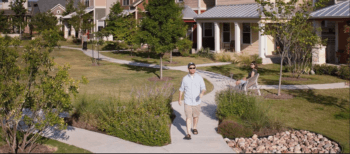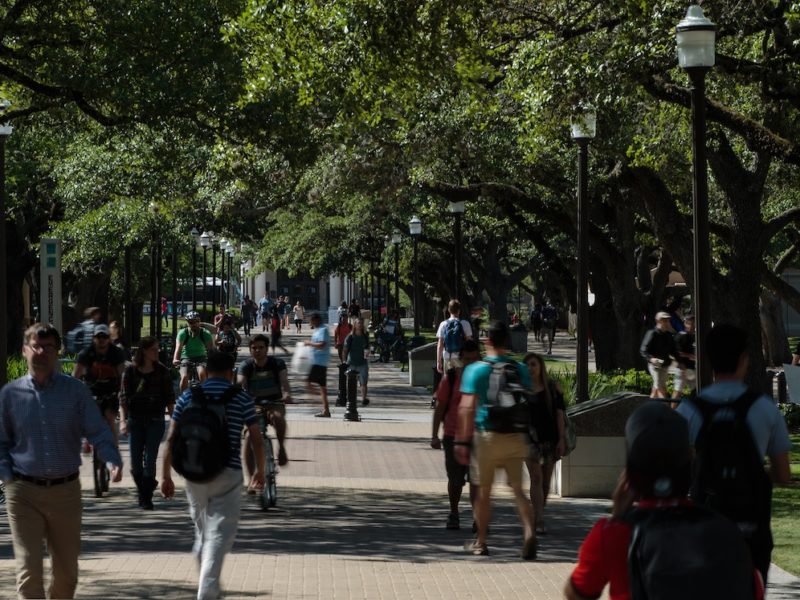‘Walkable Communities’ Really Do Work

Less driving and more physical activity and social interactions result when people live in pedestrian-oriented, activity-friendly developments known as “walkable communities,” according to a study led by Texas A&M University Professor of Architecture Xuemei Zhu.
In “A Retrospective Study on Changes in Residents’ Physical Activities, Social Interactions, and Neighborhood Cohesion After Moving to a Walkable Community,” Zhu and co-authors Chanam Lee, professor of landscape architecture, Zhipeng Lu, architecture lecturer, George Mann, professor of architecture, and Ph.D. candidate Chia-Yuan Yu, studied a transit-oriented development called Mueller.
The findings are based on data from 449 surveys of Mueller residents who answered questions about their physical activity and sense of community in Mueller and their previous residences.
The researchers found that in addition to improved physical and social activity, Mueller residents perceived more neighborhood cohesion than they did in their previous neighborhood.
Mueller, a planned development approximately 5 miles from downtown Austin, features many activity-friendly design characteristics, including a mix of high-density residences and small businesses, 140 acres of evenly distributed parks, 13 miles of hike and bike paths and sidewalks lining a grid pattern of interconnected streets. Mueller is also a mixed-income community, with more than 25-percent affordable housing units indistinguishably incorporated with market-rate units.
Residents reported a 40 percent average increase in walking or biking activities after moving to the community. Additionally, 65 percent of the study respondents noted an increase in physical activity and 48 percent said their health improved.
Zhu notes the resulting decrease in driving has a positive effect on environmental health as well. “Significant reductions in residents’ driving suggest that walkable communities can also deliver important environmental benefits by reducing fuel consumption and environmental pollution,” she explains.
Researchers also found that residents who had previously lived in areas unfavorable to walking showed the most increased physical activity, with the more significant increase among high-risk populations who were inactive in their old neighborhoods or prone to obesity and other potential health risks.
Study findings were mentioned in an article posted on the Scientific American website, which also reported a new partnership between the American Institute of Architects and design programs at Texas A&M and 10 other universities that will research the relationship between building design, city planning and health.
The study was supported by grants from the AIA and the Global Obesity Prevention Center at Johns Hopkins University.
Zhu, Lee, Lu and Mann are part of the Design Research for Active Living Team in the Center for Health Systems & Design at Texas A&M’s College of Architecture.
Additional partners in the project included the Texas A&M Health Science Center’s College of Medicine, the International Union of Architects’ Public Health Group and city of Austin staff, developers and designers engaged in the Mueller development.
Media contact: Phillip Rollfing, College of Architecture.





